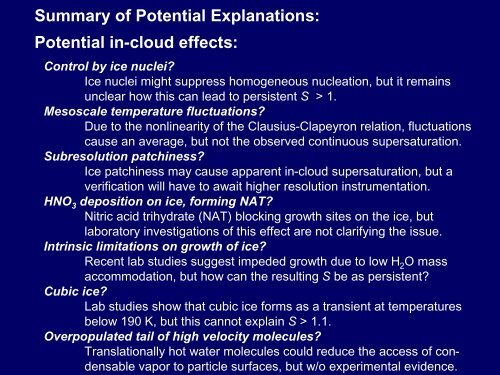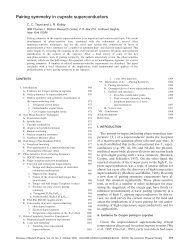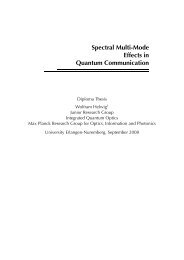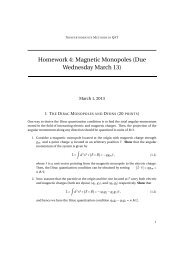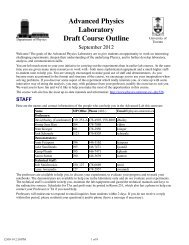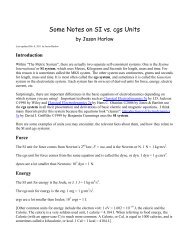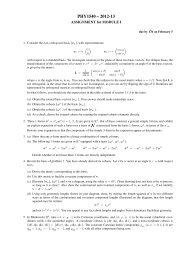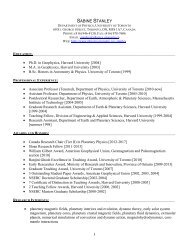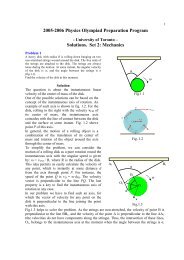PDF file - Department of Physics
PDF file - Department of Physics
PDF file - Department of Physics
Create successful ePaper yourself
Turn your PDF publications into a flip-book with our unique Google optimized e-Paper software.
Summary <strong>of</strong> Potential Explanations:<br />
Potential in-cloud effects:<br />
Control by ice nuclei?<br />
Ice nuclei might suppress homogeneous nucleation, but it remains<br />
unclear how this can lead to persistent S > 1.<br />
Mesoscale temperature fluctuations?<br />
Due to the nonlinearity <strong>of</strong> the Clausius-Clapeyron relation, fluctuations<br />
cause an average, but not the observed continuous supersaturation.<br />
Subresolution patchiness?<br />
Ice patchiness may cause apparent in-cloud supersaturation, but a<br />
verification will have to await higher resolution instrumentation.<br />
HNO 3 deposition on ice, forming NAT?<br />
Nitric acid trihydrate (NAT) blocking growth sites on the ice, but<br />
laboratory investigations <strong>of</strong> this effect are not clarifying the issue.<br />
Intrinsic limitations on growth <strong>of</strong> ice?<br />
Recent lab studies suggest impeded growth due to low H 2 O mass<br />
accommodation, but how can the resulting S be as persistent?<br />
Cubic ice?<br />
Lab studies show that cubic ice forms as a transient at temperatures<br />
below 190 K, but this cannot explain S > 1.1.<br />
Overpopulated tail <strong>of</strong> high velocity molecules?<br />
Translationally hot water molecules could reduce the access <strong>of</strong> condensable<br />
vapor to particle surfaces, but w/o experimental evidence.


